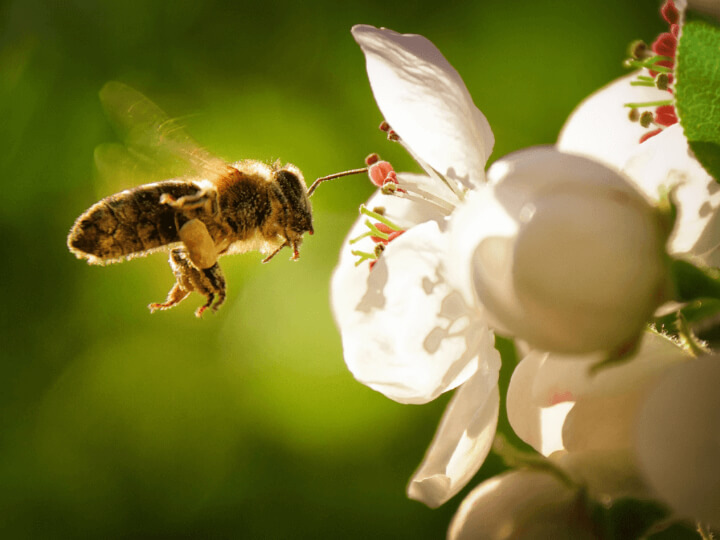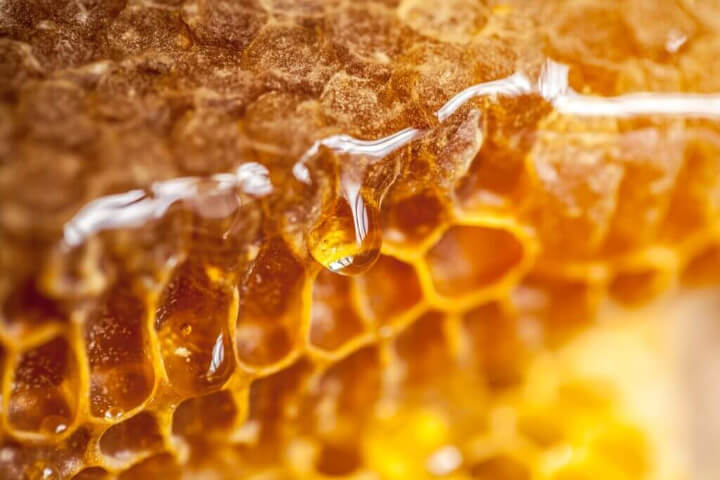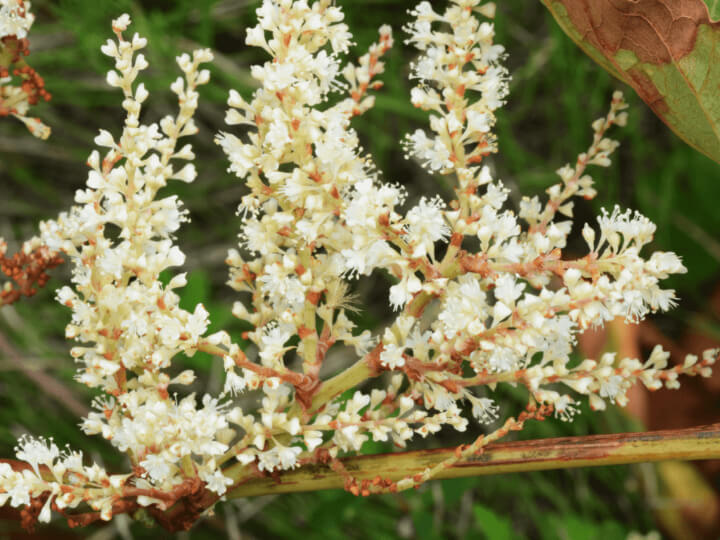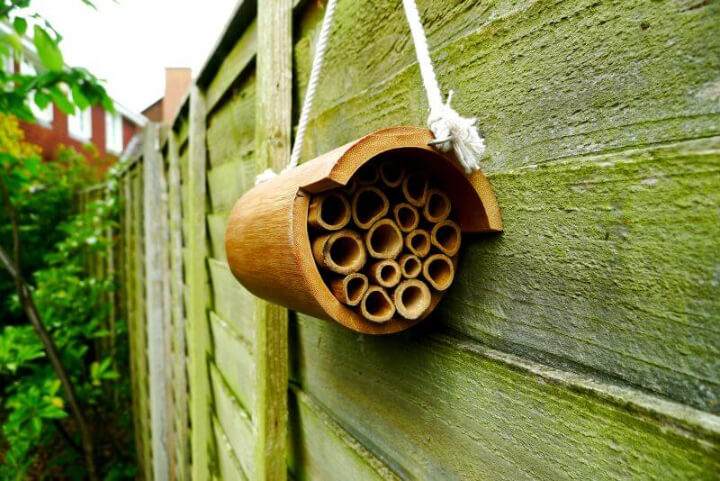

Why We Need Bees and How Japanese Knotweed Can Help
Bees are vital to life on Earth. Without them, our food supply, natural ecosystems and even local economies would be under serious threat. While Japanese knotweed is often seen as a property risk, it offers a surprising benefit to one of our most important pollinators: the bee.
In this blog, we’ll explore why bees are in decline, how knotweed fits into the picture and whether Japanese knotweed honey is something worth celebrating.
Why Bees Matter So Much
Bees pollinate around 80 percent of wild plants and close to 90 percent of the world’s food crops. These include essentials like apples, tomatoes, berries, almonds, cucumbers and even cotton plants used in textiles.
There are about 280 bee species in the UK, each with different roles. Some are better at pollinating long-tubed flowers, while others favour fruit trees or meadow plants. Their work supports biodiversity across entire ecosystems.
Without bees, many of our plants would fail to reproduce, leading to fewer crops, less natural regeneration and disrupted food chains.
What’s Causing Bee Decline?
Several overlapping issues have led to falling bee populations:
1. Loss of Habitat
Wildflower meadows have declined by over 95 percent since the 1930s. Bees struggle to find enough variety in food and places to nest.
2. Pesticides and Insecticides
Neonicotinoids have been linked to reduced bee fertility and disorientation. Though banned in many areas, they persist in the environment and are hard to avoid entirely.
3. Climate Change
Milder winters and unpredictable springs confuse bees and plants. Flowers may bloom too early, and bees may emerge before enough nectar is available. Droughts and heatwaves make it harder for bees to find water and healthy forage.
4. Disease and Parasites
The varroa mite is one of the biggest threats. It weakens bee immune systems and spreads viruses through colonies.
Why Bees Prefer Certain Plants
Not all flowers are created equal when it comes to bees. Bees choose flowers based on:
- Shape – deep flowers suit long-tongued bees, open flowers help short-tongued species
- Bloom timing – staggered flowering across the seasons ensures bees can feed year-round
- Nectar content – plants rich in nectar attract more visits and better pollination
This is where Japanese knotweed plays a role. It flowers later than most UK plants, helping to plug a critical seasonal gap.

Japanese Knotweed and Late-Season Nectar
Japanese knotweed blooms in late August and September, when many other wildflowers are fading. Its large sprays of creamy white flowers attract bees that are preparing for winter.
In some cases, knotweed may be the only food source available in disturbed or degraded areas. While not ideal for biodiversity, this fallback option helps support bee health during a crucial window.
What Is Japanese Knotweed Honey?
Japanese knotweed honey is produced when bees collect nectar from knotweed flowers. The resulting honey is:
- Dark amber in colour
- Bold and slightly spicy in flavour
- High in antioxidants like resveratrol
- Naturally antibacterial and anti-inflammatory
This type of honey has been used in Japan for decades. It is now gaining attention in the UK and US as a high-quality raw honey with added health benefits.
Benefits of Japanese Knotweed Honey
Raw Japanese knotweed honey may support:
- Immune function – thanks to antioxidant and antimicrobial compounds
- Wound healing – when used topically to keep cuts sterile
- Gut health – contains natural enzymes and probiotics
- Inflammation control – due to polyphenols and flavonoids
- Allergy reduction – through gradual exposure to trace pollen content
It also offers an alternative to refined sugar, with a slower energy release and fewer blood sugar spikes.

What About the Knotweed Plant Itself?
Japanese knotweed is rich in resveratrol and other plant polyphenols. In traditional Chinese and Japanese medicine, it has been used for centuries to treat inflammation, viral infections and cardiovascular issues.
Edible young shoots can be prepared similarly to rhubarb. Some foragers and chefs use it in crumbles, jams and stir-fry dishes, though foraging should never be done unless you understand the legal restrictions around knotweed.
How Japanese Knotweed Helps Bees in Other Ways
When properly cut and dried, knotweed stems can be reused to build bee hotels for solitary species like mason and leafcutter bees. These bees are just as important as honeybees and often pollinate crops more efficiently.
How to Make a Bee Hotel Using Knotweed Stems
- Cut dry knotweed stems into 10 to 20 cm sections
- Remove loose debris or pith from inside
- Bundle the stems in a wooden box or frame with a back wall
- Secure the hotel at head height on a sunny south-facing wall
- Add a nearby shallow dish with pebbles for water
Knotweed stems are similar to bamboo and make an excellent reuse option after professional removal.

Should You Let Knotweed Grow for Bees?
No. While it may support bees, knotweed is highly invasive and causes serious property damage. It also outcompetes native plants that provide more diverse and seasonally staggered food sources.
The goal should be to replace knotweed with native wildflowers that bloom in spring, summer and autumn. Good options include:
- Viper’s bugloss
- Red clover
- Devil’s-bit scabious
- Borage
- Greater knapweed
These offer nectar and pollen throughout the year and support a wider range of pollinators.

Final Thoughts
Bees are essential to our health and the environment. While Japanese knotweed is invasive, its late-season flowers offer bees a valuable food source. The honey produced from knotweed nectar is packed with antioxidants and health-promoting compounds.
Rather than leaving knotweed to spread, the best approach is to remove it responsibly and plant native alternatives that support bees year-round.
Frequently Asked Questions
Is Japanese knotweed honey safe to eat?
Yes. It is raw, nutrient-rich and high in antioxidants. It also contains resveratrol, which is linked to heart health and immune support.
Do bees rely on Japanese knotweed?
In late summer, knotweed may be one of the only flowering plants available. While not ideal, it offers bees critical energy before winter.
Can I leave knotweed in my garden to help pollinators?
No. Knotweed is a controlled invasive species. Leaving it to grow can damage structures and lead to legal consequences.
What should I plant instead of knotweed to help bees?
Choose native flowering plants like borage, clover, knapweed and scabious. These support pollinators across the seasons and are much safer for the environment.
About the Author
Adam Brindle is the Founder and CEO of Grounds Care Group, parent company of Japanese Knotweed Specialists. Adam has spent more than a decade helping clients manage invasive plants using sustainable and legally compliant methods.